Polished concrete vs microcement: advantages of each coating
Currently there is a lot of confusion, due to ignorance, about polished cement. In fact, most people associate it with the typical industrial-style pavement and strong grey tone with a mirror effect that is used in the interiors and exteriors of large areas such as offices, shops, factories, warehouses and car parks. Even, although to a much lesser extent, in some private homes.
However, on most occasions what is assumed to be polished cement is actually microcement. The decorative coating that is currently trending in interior decoration and design, both in homes and in shops and premises. A coating that has also spread like wildfire on outdoor terraces, facades or swimming pools.
In this article, you will find everything you need to know and didn't know about polished concrete: what it is, its main qualities, the different finishes it allows, the application process, the price per square meter and, above all, the main differences with themicrocementor smoothed microcement.
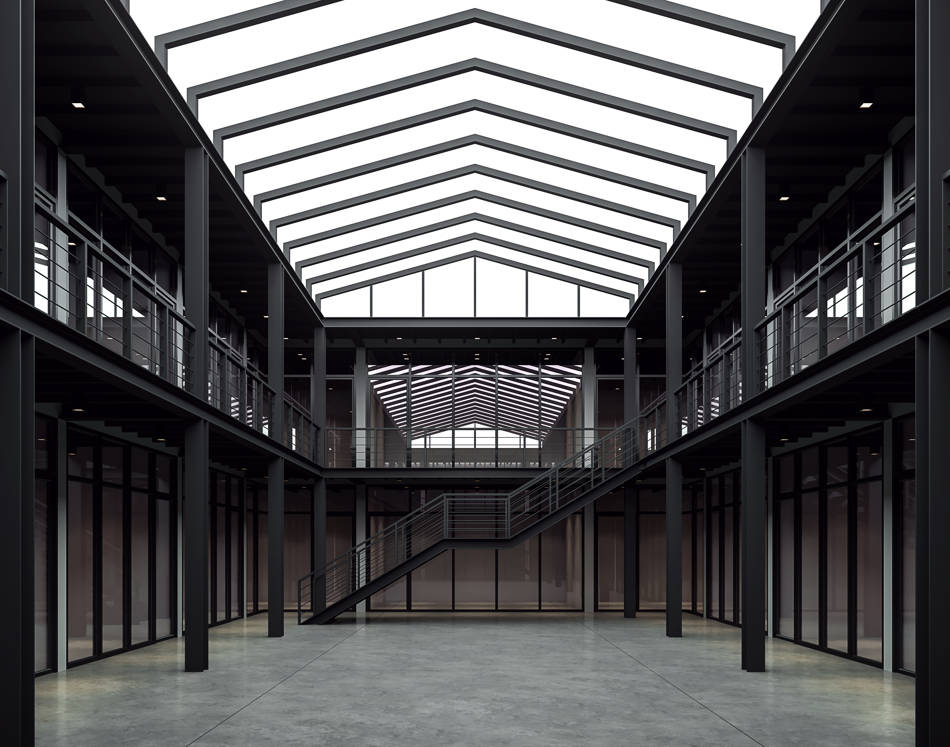
What is polished concrete?
Polished cement, also called polished concrete, is actually a decorative finish, not a coating per se. This product is mainly used in outdoor spaces of car parks, shopping centres or sports courts and, to a much lesser extent, in some indoor rooms.
Polished concrete is a finish resulting from sprinkling a cementitious mortar with aggregates and, afterwards, polishing the floor to bring out its shine with a rotary polisher. This technique of polishing the pavement is called trowelling.
Advantages of polished concrete
Polished concrete is designed to cover surfaces where the functionality of the pavement is more important than its aesthetics. Why? Because polished concrete is characterised by its great durability and resistance, two elements that make it ideal for covering those industrial surfaces that are exposed to a high traffic and weight. In fact, they are widely used for loading and unloading areas, as the polished concrete pavement does not crack.
In addition, polished concrete floors withstand tyre rolling very well. That's why we see this type of finish very often in car parks and parking lots.
Another quality of polished concrete floors is that their smooth and shiny surface prevents the accumulation of dust and dirt. A finish that also enhances the feeling of spaciousness.
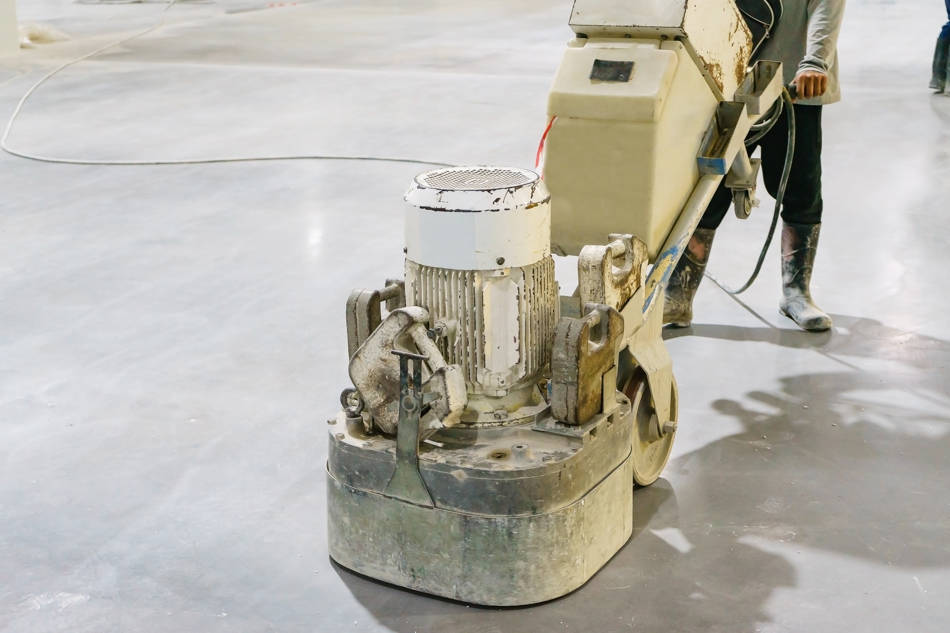
Disadvantages of polished concrete
But it's also important to know that polished concrete has a series of drawbacks and disadvantages to consider. Below we point out the main ones:
- The polished concrete can lose shine over time due to very abrasive liquids such as industrial solvents. Therefore, it will need to be polished again.
- It can end up fissuring and cracks may appear if the expansion joints are not done correctly or the pavement is misused.
- This finish should be avoided in places with cold or very hot temperatures, as polished cement is not a good thermal insulator.
- It can only be applied on horizontal surfaces.
- The process of application requires time, as it demands to carry out works and use machinery. In relation to this, it has joints.
- Just as with temperature, polished concrete flooring has poor acoustic insulation.
- It is a low porosity material and, in addition, it needs mesh for its structure.
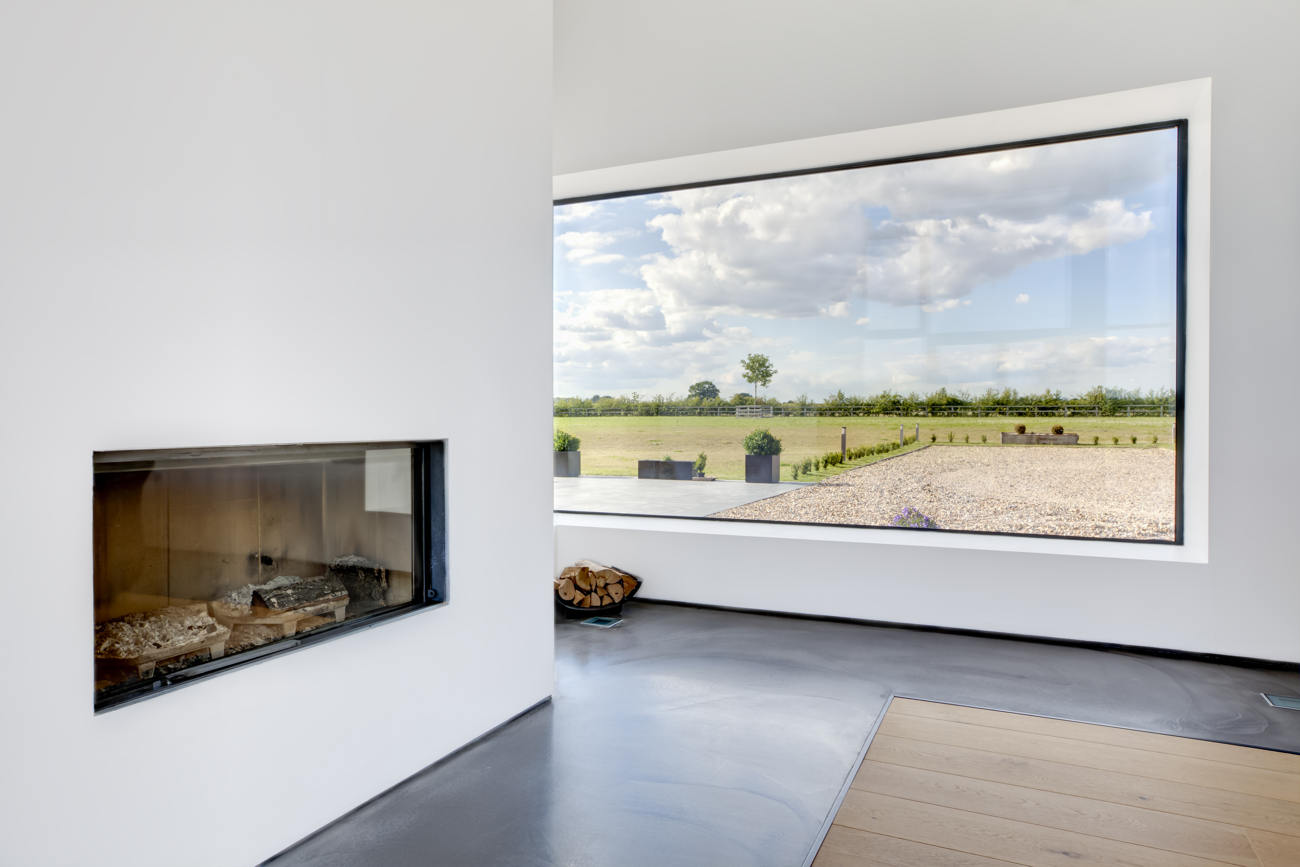
Finishes in polished concrete
Although polished concrete is mainly associated with grey finishes due to the locations where it is usually applied, there is the possibility to choose seemingly riskier colours such as black, red, green... Polished concrete is applied in airports, car parks and parking lots, shopping centres and factories.
Polished concrete bathrooms
Polished concrete bathrooms and sinks do not exist. This type of finish is confused with the use of other decorative coatings such as burnished concrete or a microcement sink. In fact, microcement is one of the most used coatings to renovate this room due to the great possibilities of use it offers.
Microcement in bathrooms is perfect for lining shower trays or bathtubs, thanks to the waterproof and non-slip capacity it can achieve through the use of specific sealers. But also for creating shelves, bathroom furniture, walls and floors.
How to make a polished concrete floor
The installation of a polished concrete floor is not much different from the application process of other types of concrete flooring. The components of sand, aggregates, cement and water are indisputable.
As it is also the case that the concrete mix can be made both on site and with specialised concrete mixers. This last alternative is the most recommended when it is necessary to cover large surfaces.
Next, we explain step by step how to make a polished cement floor correctly:
Step 1: prepare the ground
Tidy up the terrain, making sure there is no debris or dirt. If there is, remove and clean. Then check the pavement levels, in case it is necessary to fill the surface.
Step 2: formwork
Formwork the area that is going to be paved with polished cement. A process whose duration will vary depending on the square meters of surface.
Step 3: use mesh
The next step is to strengthen the structure of the future polished concrete floor. For this, it is necessary to use mesh, which will provide the pavement with greater resistances.
Step 4: pour the concrete
Empty the concrete mix onto the pavement. It is very important in this step to smooth and level the surface, with the help of a ruler.
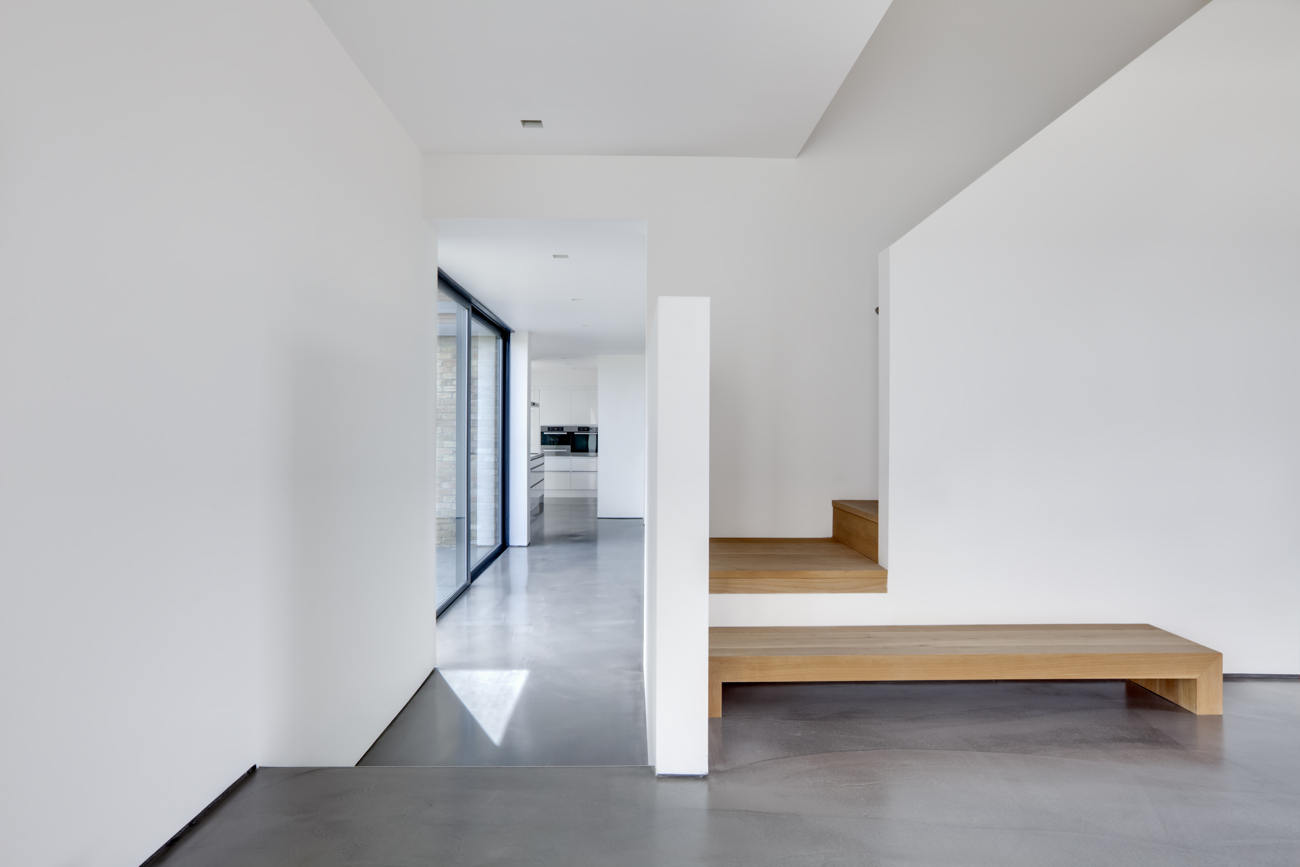
Step 5: check the thickness of the slab
It's time to check the thickness of the slab, depending on the level we have used as a reference in the formwork step.
Step 6: curing of the concrete
Wait for the concrete to cure and dry properly. If necessary, use a float to smooth the pavement to achieve a much smoother finish.
Step 7: polish the floor
To finish making a polished concrete floor, you have to polish the surface to get that characteristic shine. It can be done with a helicopter or a polisher.
Can polished concrete be applied outdoors?
Just because polished concrete is a decorative coating that predominates in interiors does not mean that its use is limited to these spaces. The resistance and durability that this material enjoys make it an equally valid alternative outdoors. An ambivalence that, despite the drawbacks that this material presents compared to, for example, microcement, forms the reason for its popularity in recent years.
In this way, it is a decorative technique that can be applied in a multitude of outdoor spaces such as car parks, shopping centres, supermarkets, industrial warehouses, etc.
Price of polished cement per m2
The price of polished concrete per square metre depends on several factors, among them the dimensions of the floor to be covered as well as whether it is indoors or outdoors. In this regard, the final cost can be increased in some outdoor applications.
Similarly, the rates of each professional can cause significant fluctuations in the price just as the time when the work is carried out. Broadly speaking, the price of polished concrete per m2 fluctuates between approximately 40 and 50 euros.
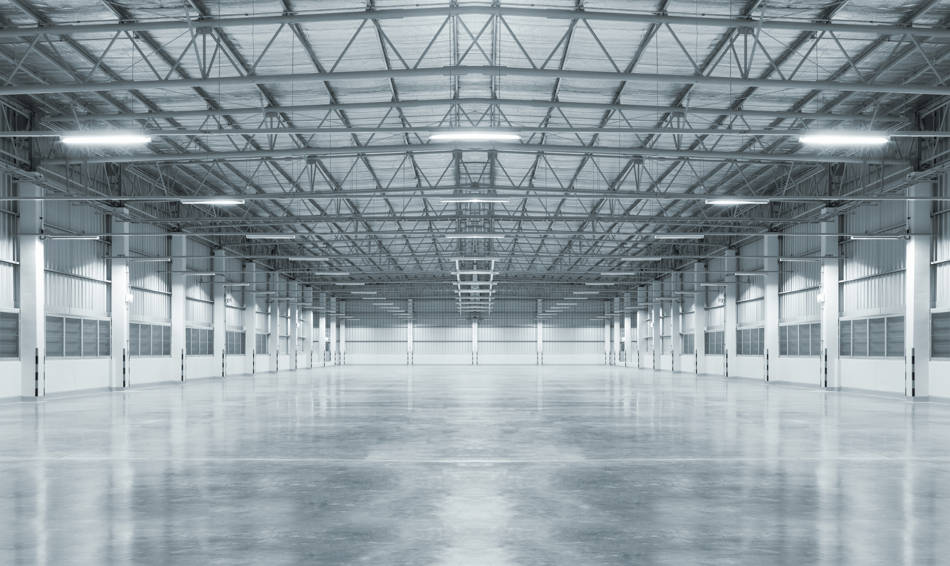
How to clean a polished concrete floor: expert tips
The rooms that contain polished concrete floors breathe modernity on all four sides. Especially the environments in which the popular industrial style has been sought to reproduce. Very practical and resistant floors that following a small cleaning protocol will look impeccable for a long time.
Take note of the best tips for cleaning a polished concrete floor. The experts speak!
1. Daily cleaning of polished concrete flooring
Although this finish does not require a deep cleaning like other materials such as parquet or wood, which are much more delicate, it is highly recommended to clean the polished concrete floor every day. Even if it is in a superficial and quick way. How? With a cloth or mop to first remove the dust, and then scrub the surface with water and neutral soap.
2. Rinse with water, always
To keep the polished concrete floor glossy, it is very important to rinse with water after using neutral soap. A tip that becomes even more relevant when the soap is replaced by cleaning products. In this case, if the pavement is not rinsed with water after use, the residues that could remain on the surface would gradually reduce its shine until it fades. It is forbidden to let the product dry before adding water.
3. Keep aggressive and oil-based products away
Never, under any circumstances, clean your polished concrete floor with aggressive products or those that include oil in their formulation. Keep ammonia, bleach and solvent-based products at bay; the floor will lose its shine. Do the same with oil-based products, because a kind of film will be created on the floor that will promote the creation of dirt.
Maintenance of polished concrete floor: what you have to do
That the resistances of a floor coated with polished cement are exceptional does not mean that it must be kept in good condition to continue being so for a long time. Something logical that happens with any material that decorates the floor of the home, regardless of the space in which it is located.
In this regard, and just as it happens with cleaning and has just been explained, experts also agree on the steps to take to maintain polished concrete floors in an optimal state for a long time. This is what you need to know, and do.
Acierta con el barniz sellador
The varnish protects the polished concrete floor, gives it greater resistance and waterproof finishes. It's as important to apply the material perfectly as it is to seal it properly. The varnish can be applied periodically, if desired, to strengthen the performance of the finish.
2. Renew the protective layer once a year
Once a year doesn't hurt. A popular saying that can be extrapolated to polished concrete. In floors that suffer a higher degree of traffic, it is highly advisable to renew the protective layer of the floor between 6 and 9 months approximately. Although it will ultimately depend on the use.
3. Protege el suelo de cemento pulido de manchas
Following on from the previous advice, when the layer that protects the polished concrete floor deteriorates over time, it becomes totally exposed to many factors. Stains are one of them. To avoid unnecessary headaches, take note.
Has any liquid or substance been spilled on the floor? Clean up as soon as possible! Use absorbent paper to prevent dirt from penetrating the pavement.
Then, clean the floor with the most suitable product for it. If the stain is oil, for example, you will need to use a degreaser. Expert tip: to check compatibility before regretting a bad decision, do a small test with the product in an area that is not very visible. Always rinse with water afterwards.
Differences between polished concrete and microcement
If at this point you are considering using one of these two materials in your project, we provide you with useful information to assist you in your choice after comparing the pros and cons of each of them. Next, we are going to address the main differences between polished concrete and microcement.
1. Polished concrete is thicker than microcement.
The most noticeable difference between both finishes is their thickness. The microcement only has between 2 and 3 millimetres, which allows it to be applied on both horizontal surfaces (floors, stairs, ceilings...) and vertical surfaces such as walls. It is a construction material so thin that because it does not weigh it can be applied anywhere without fear that the structural load will be affected.
Something that does not happen with polished concrete, whose thickness is between 5 and 10 cm and whose application is reserved only for floors and pavements.
2. Polished concrete generates rubble, microcement does not
Another disparity between microcement and polished concrete refers to the rubble. The smoothed microcement is placed over the existing material, be it floor or wall. An excellent adherence that avoids works and the rubble that these entail.
A case completely opposite to polished concrete, a finish that requires works to completely lift the existing floor or pavement and the use of machinery for it.
3. The installation of polished concrete is much longer
This point is closely related to the previous one. As microcement does not require construction work, the application process is very fast. A procedure that in the case of polished cement is noticeably extended.
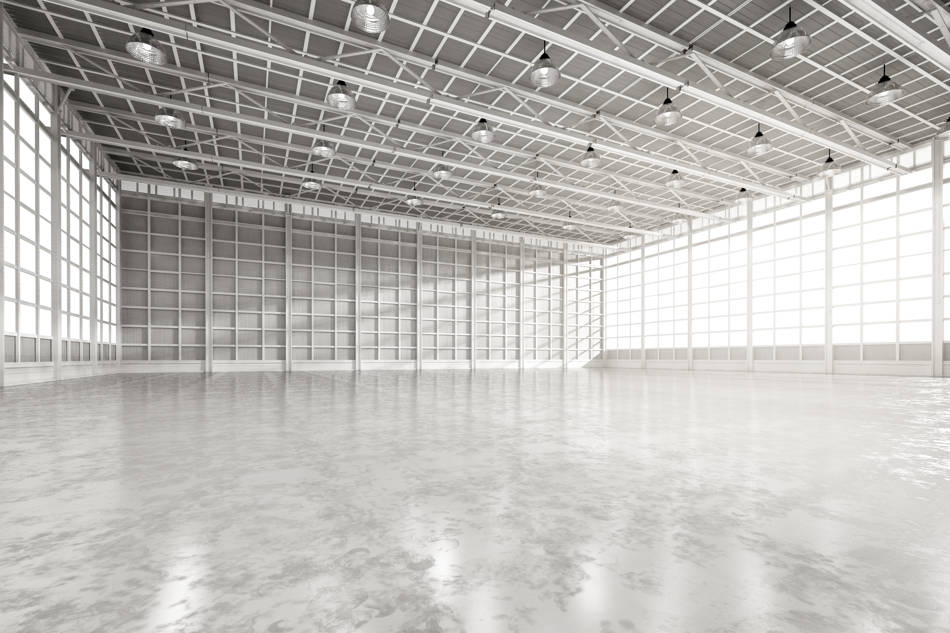
4. Polished concrete is only for floors, microcement also for walls
While the versatility of microcement allows it to be used as a coating for walls and floors, polished cement can only be applied to floors. A differentiation that, logically, has skyrocketed the popularity of the former at the expense of the latter.
5. Compatibility vs incompatibility with radiant floor heating
Underfloor heating is a great alternative to radiators and central heating for its benefits. However, this system is not compatible with any coating.
The microcement, which enjoys great thermal conductivity, is perfectly compatible with underfloor heating. In fact, it is one of the most recommended building materials.Hereyou'll find everything you need to know. A quality that polished concrete cannot boast of.
6. Only polished concrete needs expansion joints
The polished concrete requires the making of expansion joints, approximately every 4 or 5 meters apart. On the other hand, microcement is a continuous coating and, therefore, there is no need to make expansion joints. This is why the use of smoothed microcement has skyrocketed in interiors to the detriment of polished concrete.
7. The microcement is more versatile than polished cement
Microcement is not just a continuous coating that does not require works or expansion joints, but its application is also faster and simpler.
But not only for that reason, but because the smoothed microcement also provides the security of being a coating of excellent durability and resistance not only to traffic like polished cement, but also to blows, to wear by abrasion, to chemicals or scratches, among others.
And, above all, because it offers more decorative solutions as it can be applied to any surface (horizontal or vertical) and material (concrete, tiles, ceramics...). A wider range that facilitates the use of microcement in interiors and exteriors, both in private homes and in premises, businesses and other companies. In short, for all this and more, microcement is much more complete than polished concrete.
In short, for all these reasons and more, microcement is much more versatile than polished concrete.
Subscribe to our newsletter
Receive in your email tips for the application and care of microcement, the latest trends and news from Topciment products.




